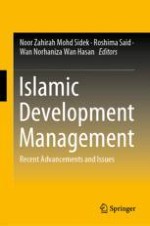2019 | OriginalPaper | Chapter
The Identity of Islam in Project Development and the Public Realm
Resisting Global Mimicry and Returning to Contextualised Inventiveness
Authors : Puteri Shireen Jahn Kassim, Norwina Mohd Nawawi, Harlina Md Sharif, Sufian Hamat
Published in: Islamic Development Management
Publisher: Springer Singapore
Activate our intelligent search to find suitable subject content or patents.
Select sections of text to find matching patents with Artificial Intelligence. powered by
Select sections of text to find additional relevant content using AI-assisted search. powered by
